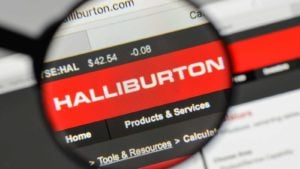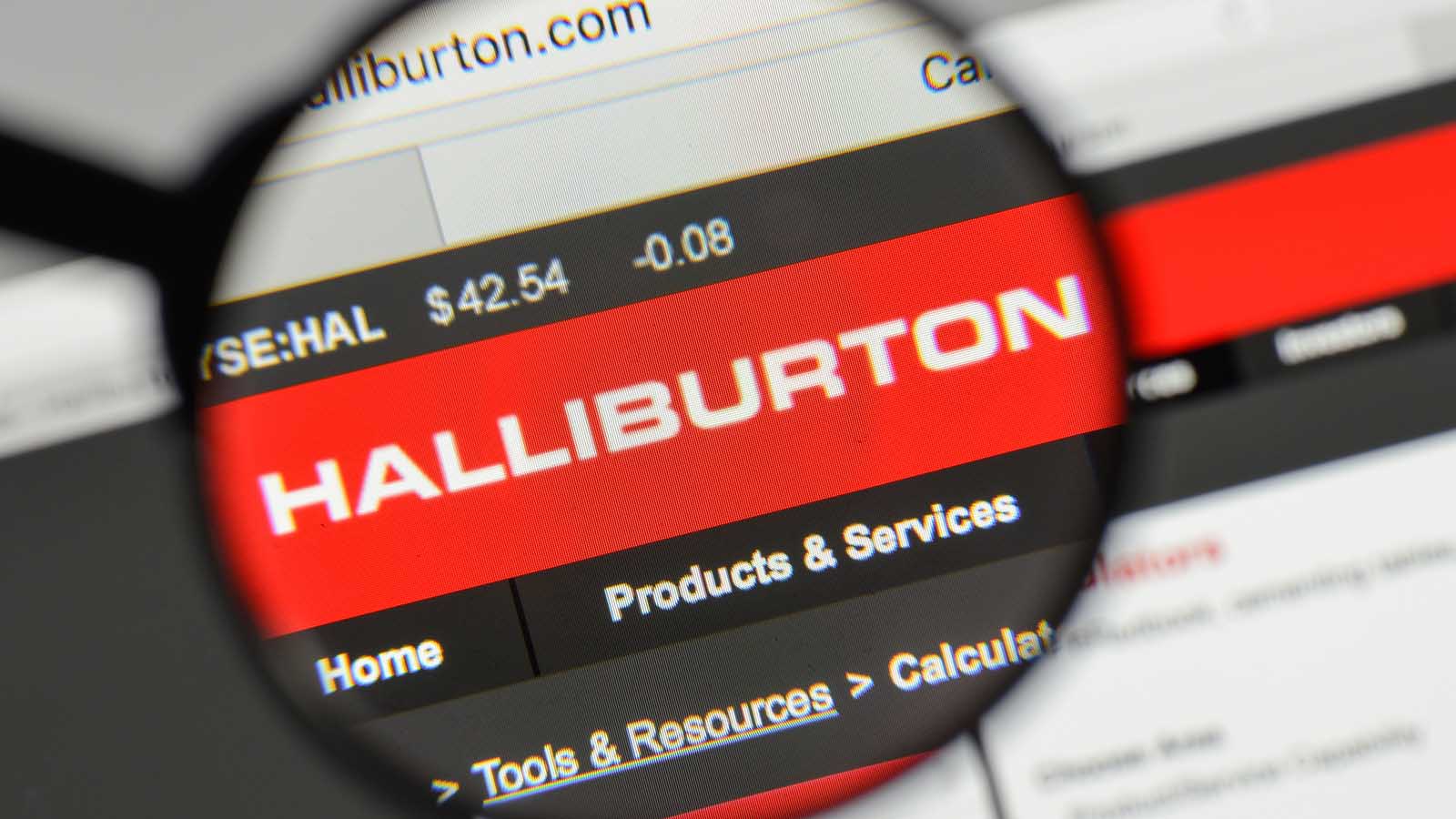Halliburton (NYSE:HAL), the oilfield services company once run by former vice president Dick Cheney, is in deep trouble. A reported loss of $1 billion, $1.16 per share, on revenue of $5 billion during the March quarter is just part of of the problem for Halliburton stock. While domestic activity dropped 25% during that quarter, the company said, international completions were up 5%. But it’s clear from the company’s actions that the rest of the year will be worse.

Halliburton conducted nearly 1,000 permanent layoffs at its Houston operations center early this month. Another 1,700 were let go in Colorado, Oklahoma and Texas oilfields. They were the company’s fourth round of layoffs this year.
The dividend for Halliburton stock was also slashed 75%. The payout had been just 18 cents per share and cost just $160 million. Now the cost will be less than $40 million.
The Boom-Bust Cycle
Oil is a boom or bust business, and companies like Halliburton have been here before.
Halliburton revenues peaked in 2014 at a run rate of nearly $33 billion. They were at $23 billion as recently as 2018. They have been as low as $16 billion in 2016. The March results indicate a run rate of $20 billion.
About half of Halliburton’s revenue is domestic, half international. In the first quarter report, weakness was focused on North American shale plays. Sales to Gulf of Mexico wells, meant to stimulate production, increased. Revenue also increased from Russia, the North Sea and Algeria. Sales to the Middle East and India were up 9% year over year. It’s these stronger lines that may be turning weak now because oil prices remain depressed.
The bulk of the first quarter loss came in preparation for this downturn. There was a $1.1 billion non-cash impairment charge, writing down equipment and covering severance. This is not Halliburton management’s first rodeo.
The Debt
The most serious balance sheet issue is Halliburton’s long-term debt. This stood at $9.6 billion at the end of the quarter. Halliburton has been working down the debt since 2015, when it peaked at about $15 billion.
During the first quarter, Halliburton’s board managed to cut debt by $500 million. A new $1 billion debt issue, paying 2.92% to 2030, helped retire $1.5 billion in higher-interest bonds dated 2023 and 2025. Those bonds were recently trading at 91 cents on the dollar.
Despite its actions, Halliburton now has $1.50 in debt for every $1 in equity. S&P lowered its rating on the debt to BBB+ in March, with a negative outlook.
The Bottom Line on Halliburton Stock
Despite the procession of bad news, Halliburton stock has done well since bottoming in March below $6 per share. Since the first quarter report was delivered in April, the shares are up almost 60%. Of the 18 analysts following Halliburton at Tipranks, more currently rate it a buy than a sell. But their one-year price target of $8.29 is 32% below the May 28 opening price of $12.19.
Investors, in short, expect Halliburton shares to recover, but they may be getting ahead of themselves.
The second- and third-quarter reports should be terrible, and the recovery will be slow. Oil prices won’t justify new domestic drilling until they’re consistently above $40 per barrel. That’s not expected to happen until 2023 at the earliest.
The current market is like a shale play. Sand and liquid, injected into a well at high pressure, cracks rock to bring up crude. In this case, it’s the Federal Reserve that’s fracking the market with cash, most of which went to investors instead of workers.
A fracked well, however, depletes rapidly. Investors should understand that before expecting the rally to continue.
Dana Blankenhorn has been a financial journalist since 1978. His latest book is Technology’s Big Bang: Yesterday, Today and Tomorrow with Moore’s Law, essays on technology available at the Amazon Kindle store. Follow him on Twitter at @danablankenhorn. As of this writing, he did not hold a position in any of the aforementioned securities.
